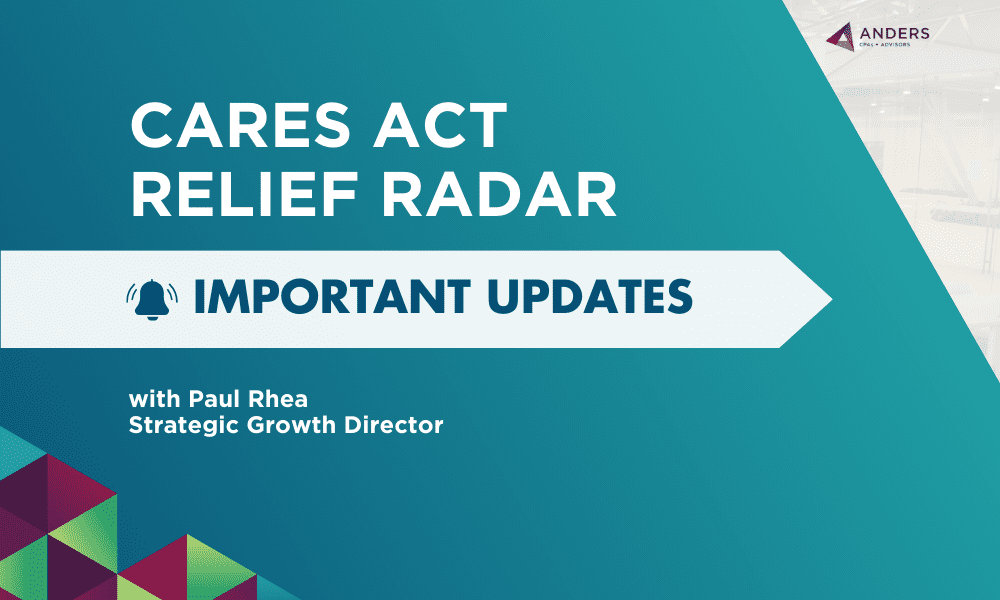The Senate passed and Trump signed the Families First Coronavirus Response Act late in the evening on March 18th. This Act is an economic stimulus plan aimed at addressing the impact of the COVID-19 outbreak on Americans and introducing paid sick leave and an expanded family and medical leave act to the nation’s employers. The leave provisions will become effective on April 2nd.
This Act includes many provisions which apply to employers, such as paid sick leave for employees impacted by COVID-19 and those serving as caregivers for individuals with COVID-19. While the Act also contains several provisions to increase funding for familiar benefit programs, like WIC and SNAP, this post summarizes two of the key benefit provisions of the Act which affect employers: The Emergency Family and Medical Leave Expansion Act and the Emergency Paid Sick Leave Act.
There are two provisions providing paid leave to employees forced to miss work because of the COVID-19 outbreak: an emergency expansion of the Family Medical Leave Act (FMLA) and the new Emergency Paid Sick Leave Act.
Emergency Family and Medical Leave Expansion Act (“FMLA”)
Expanded Coverage and Eligibility
The Act significantly amends and expands FMLA on a temporary basis. The current employee threshold for FMLA coverage would change from only covering employers with 50 or more employees to instead covering those employers with fewer than 500 employees. It also lowers the eligibility requirement, allowing any employee who has worked for the employer for at least 30 days prior to the designated leave to be eligible to receive paid family and medical leave. As a result, thousands of employers not previously subject to the FMLA may be required to provide job-protected leave to employees for a COVID-19 coronavirus-designated reason.
The Secretary of Labor excludes healthcare providers and emergency responders from the definition of employees who are allowed to take such leave. Small businesses with fewer than 50 employees are also exempt if the required leave would jeopardize the viability of their business.
Reasons for Emergency Leave
Any individual employed by the employer for at least 30 days may take up to 12 weeks of job-protected leave to allow an employee, who is unable to work or telework, to care for the employee’s child, under 18 years of age, if the child’s school or place of care is closed or the childcare provider is unavailable due to a public health emergency. This is now the only qualifying need for Emergency FMLA and a significant change from the prior version of the bill passed by the House earlier, which contained several other COVID-19-related reasons to provide Emergency FMLA.
Paid Leave
Another big change from the prior version passed from the House is the reduction of the unpaid period of Emergency FMLA. Now, the first 10 days, rather than 14 days, of Emergency FMLA may be unpaid. During this 10-day period, an employee may elect to substitute any accrued PTO, sick or vacation leave to cover some or all of the 10-day unpaid period. After the 10-day period, the employer generally must pay full-time employees at two-thirds the employee’s regular rate for the number of hours the employee would otherwise be normally scheduled. The new Act now limits this pay entitlement to $200 per day and $10,000 in the aggregate per employee.
Calculating Pay for Non-Full Time Employees
Employees who work a part-time or irregular schedule are entitled to be paid based on the average number of hours the employee worked for the six months prior to taking Emergency FMLA. Employees who have worked for less than six months prior to leave are entitled to the employee’s reasonable expectation at hiring of the average number of hours the employee would normally be scheduled to work.
Job Restoration
Employers with 25 or more employees will have the same obligation as under traditional FMLA to return any employee who has taken Emergency FMLA to the same or equivalent position upon the return to work. However, employers with fewer than 25 employees are generally excluded from this requirement if the employee’s position no longer exists following the Emergency FMLA leave due to an economic downtown or other circumstances caused by a public health emergency during the period of Emergency FMLA. This exclusion is subject to the employer making reasonable attempts to return the employee to an equivalent position and requires an employer to make efforts to return the employee to work for up to a year following the employee’s leave.
Effective Date and Expiration
This program will become effective 15 days after its enactment by President Trump, which is April 2nd, and will remain in effect until December 31, 2020.
Emergency Paid Sick Leave Act
Reasons for Paid Sick Leave
This Act allows an eligible employee to take paid sick leave because the employee is:
- Subject to a federal, state or local quarantine or isolation order related to COVID-19
- Advised by a health care provider to self-quarantine due to COVID-19 concerns
- Experiencing COVID-19 symptoms and seeking medical diagnosis
- Caring for an individualsubject to a federal, state or local quarantine or isolation order or advised by a health care provider to self-quarantine due to COVID-19 concerns
- Caring for the employee’s child if the child’s school or place of care is closed or the child’s care provider is unavailable due to public health emergency; or
- Experiencing any other substantially similar condition specified by the Secretary of Health and Human Services in consultation with the Secretary of the Treasury and the Secretary of Labor.
Of note, caring for another who is subject to an isolation order or advised to self-quarantine as described above is no longer limited to just family members.
Eligibility
This provision requires employers with fewer than 500 employees to provide full-time employees, regardless of the employee’s duration of employment, with 80 hours of paid sick leave at the employee’s regular rate, or two-thirds the employee’s regular rate to care for qualifying reasons 4, 5, or 6 listed above. An important change to this section provides an exception for employers who are healthcare providers or emergency responders at their election.
Cap on Paid Sick Leave Wages
The Act also places limits on paid sick leave. Paid sick leave wages are limited to $511 per day up to $5,110 total per employee for their own use and to $200 per day up to $2,000 total to care for others and any other substantially similar condition.
Carryover and Interaction with Other Paid Leave
This paid sick leave will not carry over to the following year and may be in addition to any paid sick leave currently provided by employers.
Calculating Rate of Pay
Employees who work a part-time or irregular schedule are entitled to be paid based on the average number of hours the employee worked for the six months prior to taking paid sick leave. Employees who have worked for less than six months prior to leave are entitled to the average number of hours the employee would normally be scheduled to work over a two-week period. A business employing fewer than 500 employees is required, at the request of the employee, to pay a full-time employee for 80 hours of mandated emergency paid sick leave instead of the initial 10 days of unpaid leave permitted by the Emergency Family and Medical Leave Expansion Act, summarized above.
Effective Date and Expiration
This program will become effective 15 days after it is enacted by President Trump, which is April 2nd, and will remain in effect until December 31, 2020.
Legislation around COVID-19 is continuously evolving at a rapid rate, and we will continue to update this post as legislation passes. Visit Congress.gov to read the full Families First Coronavirus Response Act bill.





